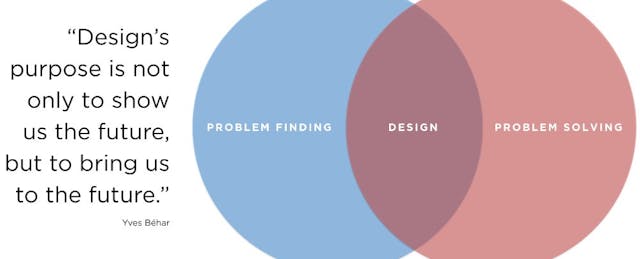If you’ve been hearing a lot lately about design, there’s a good reason. Design as a discipline has found a full seat at the table of private enterprise as a driver of business value and competitive edge. Recent mergers and acquisitions activity underscores the growing recognition of the critical role of design in innovation, strategy, and business development. Although 42 design firms have been acquired over the past decade, nearly half of the acquisitions happened in the past year (2015), according to the Kleiner Perkins Caufield & Byers influential Design In Tech Report 2016.
If design is in the ascendency in private enterprise, does it also have relevance for higher education? At Arizona State University, we believe the answer is a resounding yes. Since 2002 we have been on a path of evolution to becoming the New American University, an institution characterized by academic excellence, broad demographic access, and maximum social impact, through a process described by many as one of the most radical redesigns of higher education.
But What Is Design?
Although design and R&D groups are starting to emerge in other institutions of higher learning, significant questions remain about the exact role for and value of design in promoting the vision of an academic institution. And the confusing terminology that permeates design does not help our case. So before we get to the questions of role and value, let’s define what we mean by design. For many, the first thing that comes to mind when they hear the word “design” is either how something looks—for instance, attractive graphics, striking architecture—or the problem solving process known as design thinking with its stages of empathize, define, ideate, prototype, test. But the definition of design is much broader. For us, the essential tenets of design are:
- The act of seeing something we want to be better.
- The process of responsibly making it better.
These guideposts mean we operate within a broad ecosystem which melds traditional design disciplines and design-thinking principles with theory and practice from business and the social sciences. This multi-disciplinary approach allows us to move from problem finding to problem solving by uncovering unmet end-user and market needs and translating these insights into valuable products and services.
A Role for Design in Higher Ed?
Although some in higher education still question the idea that academic institutions could benefit from using private enterprise tools, the emerging consensus is that design lends itself very well to reimagining the future of higher education. As astutely observed by Steven Bell of Temple University, “Everything colleges and universities do is a product of design, be it the curriculum, the campus, or all the programming that supports the institution.” And they have to do it in an increasingly complex and rapidly changing environment due to globalization, the increasing complexity of modern technology, the rise of online learning, and the economic climate and corresponding demands for higher return on investment on education.
We wholeheartedly agree with Bell that leveraging design—a user-inspired, systematic, multidisciplinary approach to identifying problems and developing solutions—can put institutions on the right trajectory to “deliver higher education in ways that are both affordable and sustainable that meet the needs of a new generation of both traditional and nontraditional learners.”
When applying design principles to higher ed, we believe that the real key to success is having a clear vision. Here at EdPlus at ASU, whether designing the new employee education benefit plan or or using adaptive learning to increase undergraduate student success and retention, the Design and Development (D&D) group is relentlessly focused on helping the university achieve its goal of making more students successful, regardless of their background or location. By serving as the initial point of contact for new opportunities, D&D provides ASU with the flexibility to explore emerging opportunities without disrupting core operations; puts promising projects on the right trajectory; and informs the university about projects that should be discontinued or time-boxed.

So what’s next?
While there is definite room for healthy skepticism, we believe that design is here to stay. As we continue on our design journey at ASU, we invite others to share their experiences with applying design principles to the challenges and opportunities that characterize the rapidly shifting landscape of higher education. Specifically, how are you embracing the concept of design and what is your level of design maturity? Who is responsible for exploring new opportunities and how are they supported? What does your design process look like? Here is ours.

We look forward to advancing this discussion as a group and seeing what we can "design" together.


